Module 16 : Activated Sludge Process- Part 2
Module 16 Activated Sludge Process Part 2
Source : https://www.dep.pa.gov/Business/Water/Pages/default.aspx
Usually dispatched in 2 to 3 days
Usually dispatched in 2 to 3 days
Category:
Wastewater Treatment
•List the key monitoring points within the activated sludge process and explain what to look for at those points.
•List five key process control parameters and for each parameter, explain what it is, why it is used and how it is calculated
•List the daily process control tasks that need to be accomplished and explain how to perform them.
Only logged in customers who have purchased this product may leave a review.
Related products
A Simple Guide To The Chemistry, Selection And Use Of Chemicals For Water And Wastewater Treatment
Introduction
Every year in South Africa an estimated R500m is spent on chemicals used in the treatment of drinking and waste water. Most of this money is allocated on the basis of tenders issued and contracts awarded. The evaluation of tenders is generally undertaken by a team of people from various disciplines within the awarding organization and the decisions they make can have a significant effect on the quality of water or waste that is produced and also on the finances of the organization for which they work. It is obvious therefore that these decisions – which chemicals to use, how much to use, how much should be paid, who is the most professional supplier – are important ones and ones that should be taken whilst in possession of the most factual and impartial information. This guide aims to provide those decision-makers, and other users of water treatment chemicals, with specific and useful information about water treatment chemicals. It is a chemistry text book aimed specifically at those people who have to make informed decisions but who have not had a formal education in chemistry or whose chemistry education has not been specific in detail relevant to water treatment chemicals. It does not, however, aim to be a comprehensive chemistry textbook and chemicals not used in water treatment are not discussed; nor are properties that are irrelevant to the water treatment application of the chemical. The guide is designed to serve as a reference book with each chapter being self contained and specific. It will be easily understood by those readers that do not have a formal chemistry education and hopefully will provide some useful additional insight and information to those that The guide is divided into ten chapters and includes an appendix at the end that contains various useful equations. The contents of each chapter are listed below.
A Simple Guide To The Chemistry, Selection And Use Of Chemicals For Water And Wastewater Treatment
Introduction
Every year in South Africa an estimated R500m is spent on chemicals used in the treatment of drinking and waste water. Most of this money is allocated on the basis of tenders issued and contracts awarded. The evaluation of tenders is generally undertaken by a team of people from various disciplines within the awarding organization and the decisions they make can have a significant effect on the quality of water or waste that is produced and also on the finances of the organization for which they work. It is obvious therefore that these decisions – which chemicals to use, how much to use, how much should be paid, who is the most professional supplier – are important ones and ones that should be taken whilst in possession of the most factual and impartial information. This guide aims to provide those decision-makers, and other users of water treatment chemicals, with specific and useful information about water treatment chemicals. It is a chemistry text book aimed specifically at those people who have to make informed decisions but who have not had a formal education in chemistry or whose chemistry education has not been specific in detail relevant to water treatment chemicals. It does not, however, aim to be a comprehensive chemistry textbook and chemicals not used in water treatment are not discussed; nor are properties that are irrelevant to the water treatment application of the chemical. The guide is designed to serve as a reference book with each chapter being self contained and specific. It will be easily understood by those readers that do not have a formal chemistry education and hopefully will provide some useful additional insight and information to those that The guide is divided into ten chapters and includes an appendix at the end that contains various useful equations. The contents of each chapter are listed below.
Advanced Wastewater Treatment By Nanofiltration And Activated Carbon For High Quality Water Reuse
Hybrid processes combining activated carbon and nanofiltration have been studied to identify the optimum solution for advanced wastewater treatment in high quality water reclamation and reuse. With a focus on the removal of bulk and trace organic compounds the investigation identified three promising process combinations, namely powdered activated carbon followed by nanofiltration (PAC/NF), granular activated carbon followed by nanofiltration (GAC/NF) and nanofiltration followed by granular activated carbon (NF/GAC). The removal potential was examined in lab and pilot scale for a range of refractory pharmaceuticals and industrial chemicals typically detected in effluent in trace concentrations ranging from ng/L to μg/L. Fluorescence excitation emission spectroscopy was employed for the investigation of the fate of effluent organic matter. The optimum strategies for operation of the hybrid processes were determined in pilot scale. The experiments were conducted at the Wastewater Treatment Plant Aachen Soers providing an effluent of high quality with low dissolved organic carbon (DOC) concentrations of about 5 mg/L.
Advanced Wastewater Treatment By Nanofiltration And Activated Carbon For High Quality Water Reuse
Hybrid processes combining activated carbon and nanofiltration have been studied to identify the optimum solution for advanced wastewater treatment in high quality water reclamation and reuse. With a focus on the removal of bulk and trace organic compounds the investigation identified three promising process combinations, namely powdered activated carbon followed by nanofiltration (PAC/NF), granular activated carbon followed by nanofiltration (GAC/NF) and nanofiltration followed by granular activated carbon (NF/GAC). The removal potential was examined in lab and pilot scale for a range of refractory pharmaceuticals and industrial chemicals typically detected in effluent in trace concentrations ranging from ng/L to μg/L. Fluorescence excitation emission spectroscopy was employed for the investigation of the fate of effluent organic matter. The optimum strategies for operation of the hybrid processes were determined in pilot scale. The experiments were conducted at the Wastewater Treatment Plant Aachen Soers providing an effluent of high quality with low dissolved organic carbon (DOC) concentrations of about 5 mg/L.
Agricultural Wastewater Treatment
In many semiarid and arid countries, water is now becoming an increasingly limited resource and managers are forced to take into account sources of water that may be used economically and efficiently to encourage further development. Simultaneously, with the population increasing at a high rate, the requirement for increased production of food is apparent. The prospective for irrigation to increase both the agricultural productivity and living standards of the poor has long been acknowledged. Irrigated agriculture occupies nearly 17% of the total arable land in the world but the yield from this land includes about 34% of the world total. This perspective is even more distinct in arid areas like the Near East Region, where only 30% of the cultivated land is irrigated but it yields around 75% of total agricultural production. In the same area, more than 50% of the food necessities are imported and the increased rate in demand for the food surpasses the rate of an upsurge in agricultural production (Tunney et al., 2000).
Agricultural Wastewater Treatment
In many semiarid and arid countries, water is now becoming an increasingly limited resource and managers are forced to take into account sources of water that may be used economically and efficiently to encourage further development. Simultaneously, with the population increasing at a high rate, the requirement for increased production of food is apparent. The prospective for irrigation to increase both the agricultural productivity and living standards of the poor has long been acknowledged. Irrigated agriculture occupies nearly 17% of the total arable land in the world but the yield from this land includes about 34% of the world total. This perspective is even more distinct in arid areas like the Near East Region, where only 30% of the cultivated land is irrigated but it yields around 75% of total agricultural production. In the same area, more than 50% of the food necessities are imported and the increased rate in demand for the food surpasses the rate of an upsurge in agricultural production (Tunney et al., 2000).
Advanced wastewater treatment for separation and removal of pharmaceutical residues and other hazardous substances
The Swedish Environmental Protection Agency (EPA) has determined a need to introduce advanced treatment for pharmaceutical residues in wastewater. An additional benefit of such a treatment is that it would also include the treatment of other hazardous substances.The extent to which pharmaceutical residues risk becoming a problem depends on local conditions such as the sensitivity of the receiving waters. While this is an important variable to consider, the Swedish EPA believes that the sensitivity of the receiving waters should not be the only consideration when setting requirements for treatment. The amount of released pharmaceutical residues and long-term effects should also be considered in decision making and justification. The investment and operational costs of introducing advanced treatment depend in part on the size and current capacity of treatment facilities, which is why size limitations can be an additional consideration when setting requirements.
Advanced wastewater treatment for separation and removal of pharmaceutical residues and other hazardous substances
The Swedish Environmental Protection Agency (EPA) has determined a need to introduce advanced treatment for pharmaceutical residues in wastewater. An additional benefit of such a treatment is that it would also include the treatment of other hazardous substances.The extent to which pharmaceutical residues risk becoming a problem depends on local conditions such as the sensitivity of the receiving waters. While this is an important variable to consider, the Swedish EPA believes that the sensitivity of the receiving waters should not be the only consideration when setting requirements for treatment. The amount of released pharmaceutical residues and long-term effects should also be considered in decision making and justification. The investment and operational costs of introducing advanced treatment depend in part on the size and current capacity of treatment facilities, which is why size limitations can be an additional consideration when setting requirements.
Use of 4IR Technologies in Water and Sanitation in Latin America and the Caribbean
The United Nations’ Sustainable Development Goal 6 (SDG 6) aims to ensure the availability and management of water and sanitation for all, including an end to open defecation, by 2030.1 Lack of access to clean water and proper sanitation affect all aspects of human life across the globe, having the largest negative effects on least developed countries and marginalized communities. About 36% of the global population live in water-scarce regions, with more
than two billion people having no other choice but to consume contaminated water. Water pollution is the greatest culprit in ecosystem destruction, leading to biodiversity loss with often irreversible consequences. Water scarcity is expected to displace 700 million people by 2030, while desertification will put the livelihood of one billion people living in 100 countries across the world at risk by 2050.2 Despite these risks, our society has very few incentives to consume less water, maintain water quality, or allocate funding and resources to ecosystems
or social objectives.3 In order to fulfill the objectives of the SDG 6, the High Level Panel on Water called for a “fundamental shift in the way the world looks at and manages water”, noting that a 40% shortfall in water availability by 2030 could be expected if no action is taken.4 An urgent need to develop innovative approaches to solve global water scarcity and quality issues has arisen, as traditional financing solutions and technologies have proven to be insufficient in addressing these challenges.
Use of 4IR Technologies in Water and Sanitation in Latin America and the Caribbean
The United Nations’ Sustainable Development Goal 6 (SDG 6) aims to ensure the availability and management of water and sanitation for all, including an end to open defecation, by 2030.1 Lack of access to clean water and proper sanitation affect all aspects of human life across the globe, having the largest negative effects on least developed countries and marginalized communities. About 36% of the global population live in water-scarce regions, with more
than two billion people having no other choice but to consume contaminated water. Water pollution is the greatest culprit in ecosystem destruction, leading to biodiversity loss with often irreversible consequences. Water scarcity is expected to displace 700 million people by 2030, while desertification will put the livelihood of one billion people living in 100 countries across the world at risk by 2050.2 Despite these risks, our society has very few incentives to consume less water, maintain water quality, or allocate funding and resources to ecosystems
or social objectives.3 In order to fulfill the objectives of the SDG 6, the High Level Panel on Water called for a “fundamental shift in the way the world looks at and manages water”, noting that a 40% shortfall in water availability by 2030 could be expected if no action is taken.4 An urgent need to develop innovative approaches to solve global water scarcity and quality issues has arisen, as traditional financing solutions and technologies have proven to be insufficient in addressing these challenges.
Sewer Design Guide
Abstract:
the Sewer Design Guide is a guide for the engineer when planning and designing wastewater facilities and should be used for both public facilities and private facilities which serve multiple lots. This guide summarizes and outlines relevant City policies, applicable codes, and engineering and operational practices and procedures that have been developed in an effort to establish a cost-effective, reliable, and safe wastewater collection system. Also to be considered and used in conjunction with this design guide are all applicable current standard drawings, specifications, codes, laws and industry requirements for the planning and design of wastewater infrastructures
Sewer Design Guide
Abstract:
the Sewer Design Guide is a guide for the engineer when planning and designing wastewater facilities and should be used for both public facilities and private facilities which serve multiple lots. This guide summarizes and outlines relevant City policies, applicable codes, and engineering and operational practices and procedures that have been developed in an effort to establish a cost-effective, reliable, and safe wastewater collection system. Also to be considered and used in conjunction with this design guide are all applicable current standard drawings, specifications, codes, laws and industry requirements for the planning and design of wastewater infrastructures
Advanced Oxidation Processes for Water Treatment
This book provides an overview of the most studied AOPs, some of which are largely implemented for water remediation. The fundamental principles, kinetic modeling, water quality impact on process performance, byproduct formation, economics, examples of research and pilot studies, full-scale applications and future research needs are discussed for each advanced oxidation process.
Advanced Oxidation Processes for Water Treatment
This book provides an overview of the most studied AOPs, some of which are largely implemented for water remediation. The fundamental principles, kinetic modeling, water quality impact on process performance, byproduct formation, economics, examples of research and pilot studies, full-scale applications and future research needs are discussed for each advanced oxidation process.
Module 8: Overview of Advanced Wastewater Treatment Processes
• Identify the source and general types of wastewater odors.
• List three potential impacts of odors.
• List three factors affecting the existence of odors.
• Name a commonly used method to reduce odors from wastewater.
• Describe three methods for solving odor problems in air.
Module 8: Overview of Advanced Wastewater Treatment Processes
• Identify the source and general types of wastewater odors.
• List three potential impacts of odors.
• List three factors affecting the existence of odors.
• Name a commonly used method to reduce odors from wastewater.
• Describe three methods for solving odor problems in air.



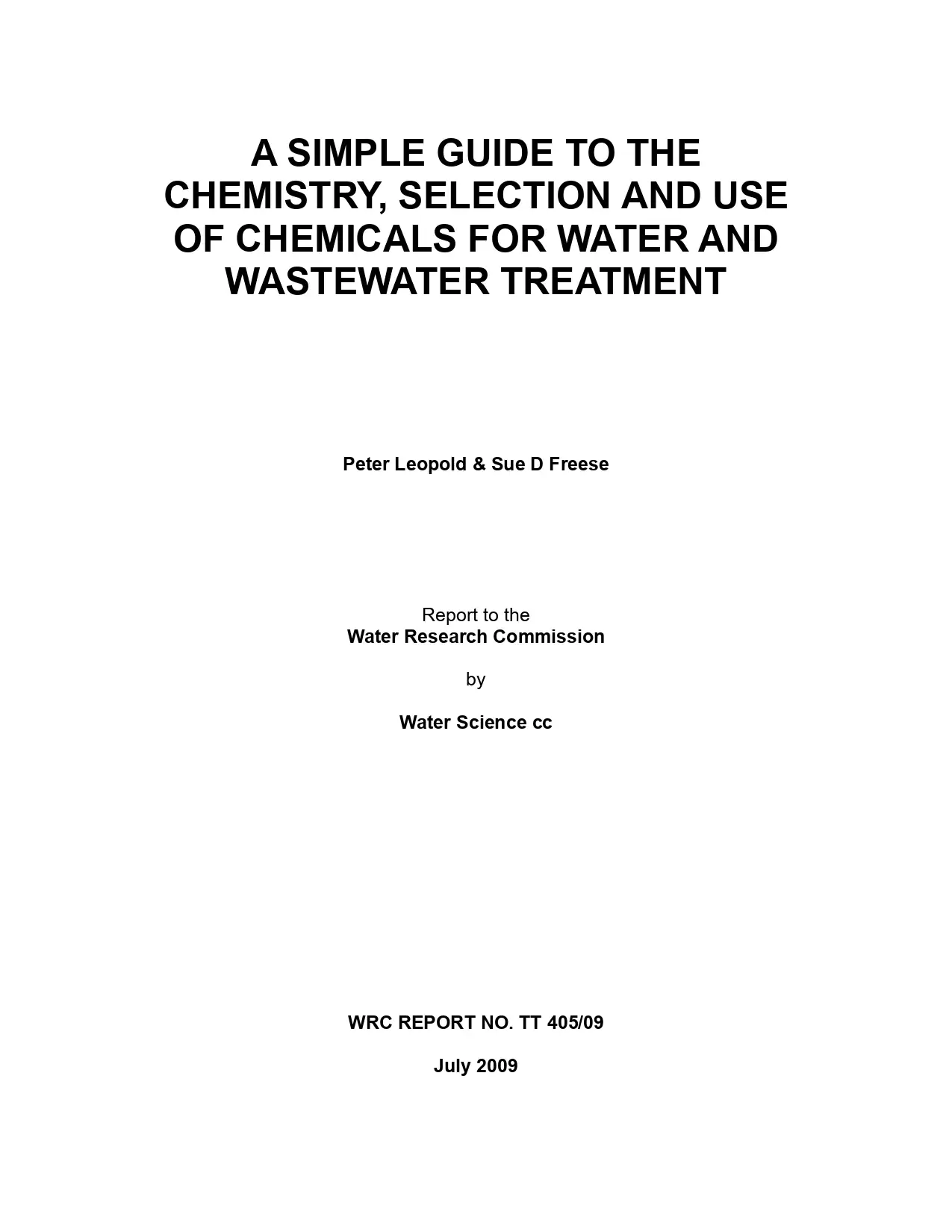
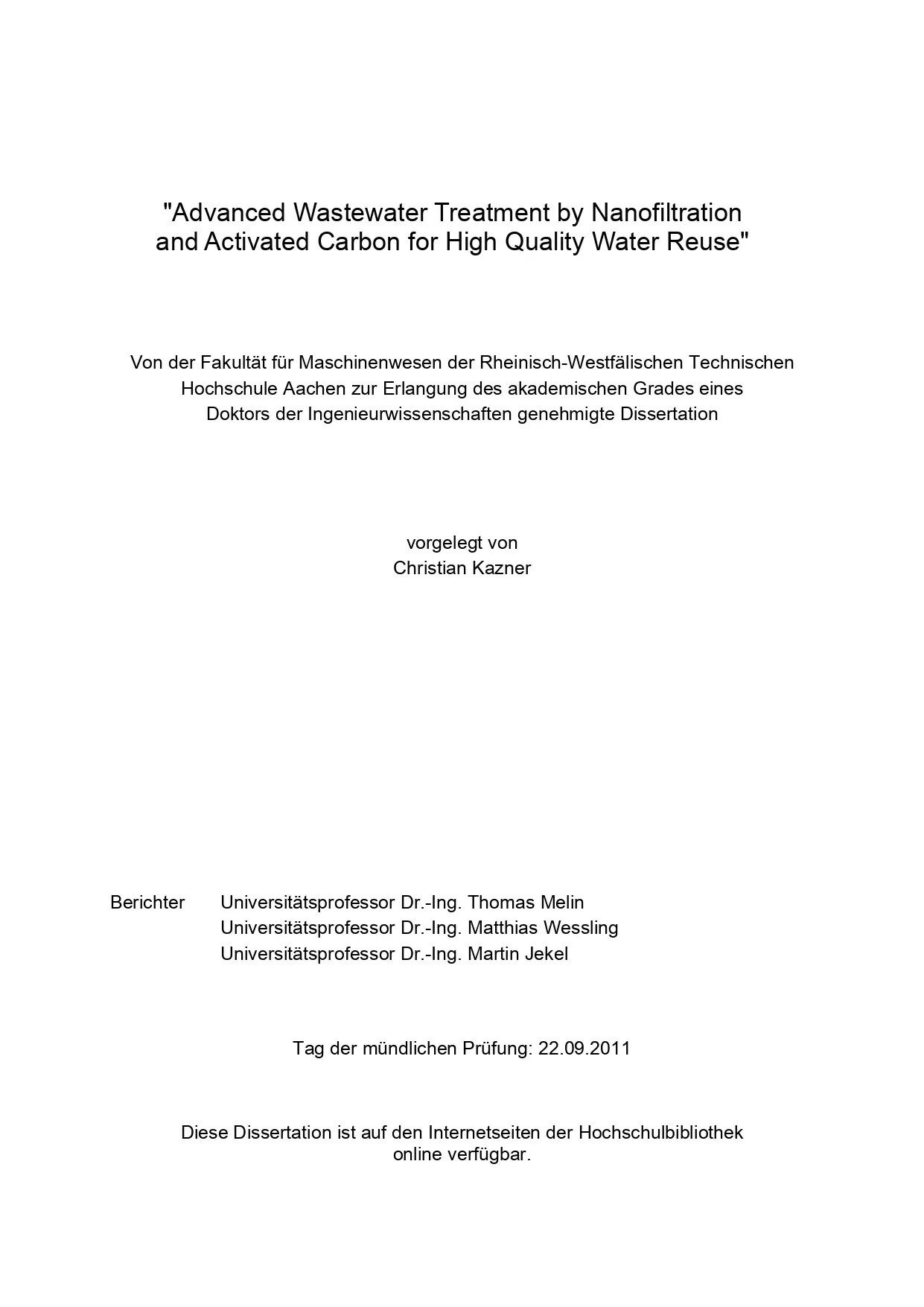
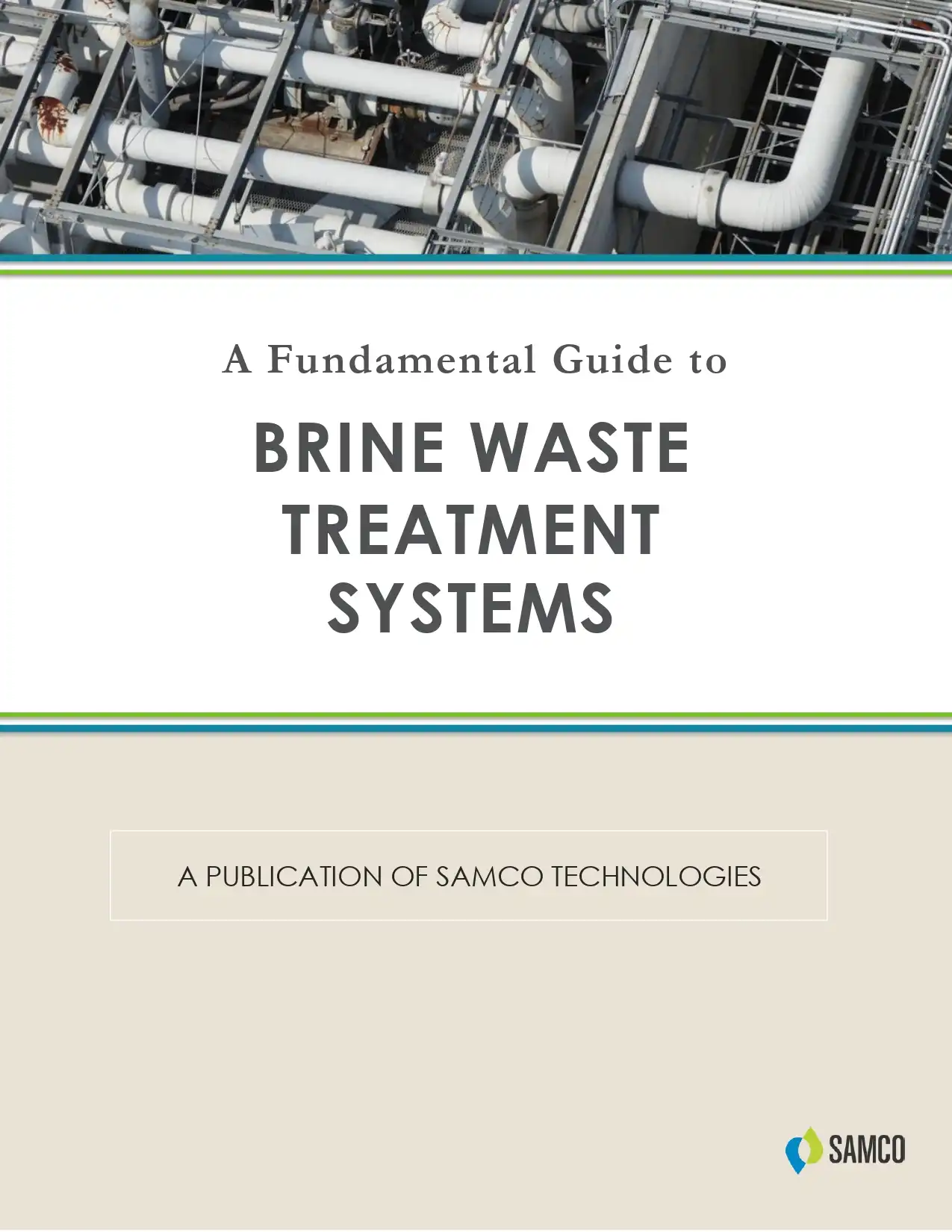
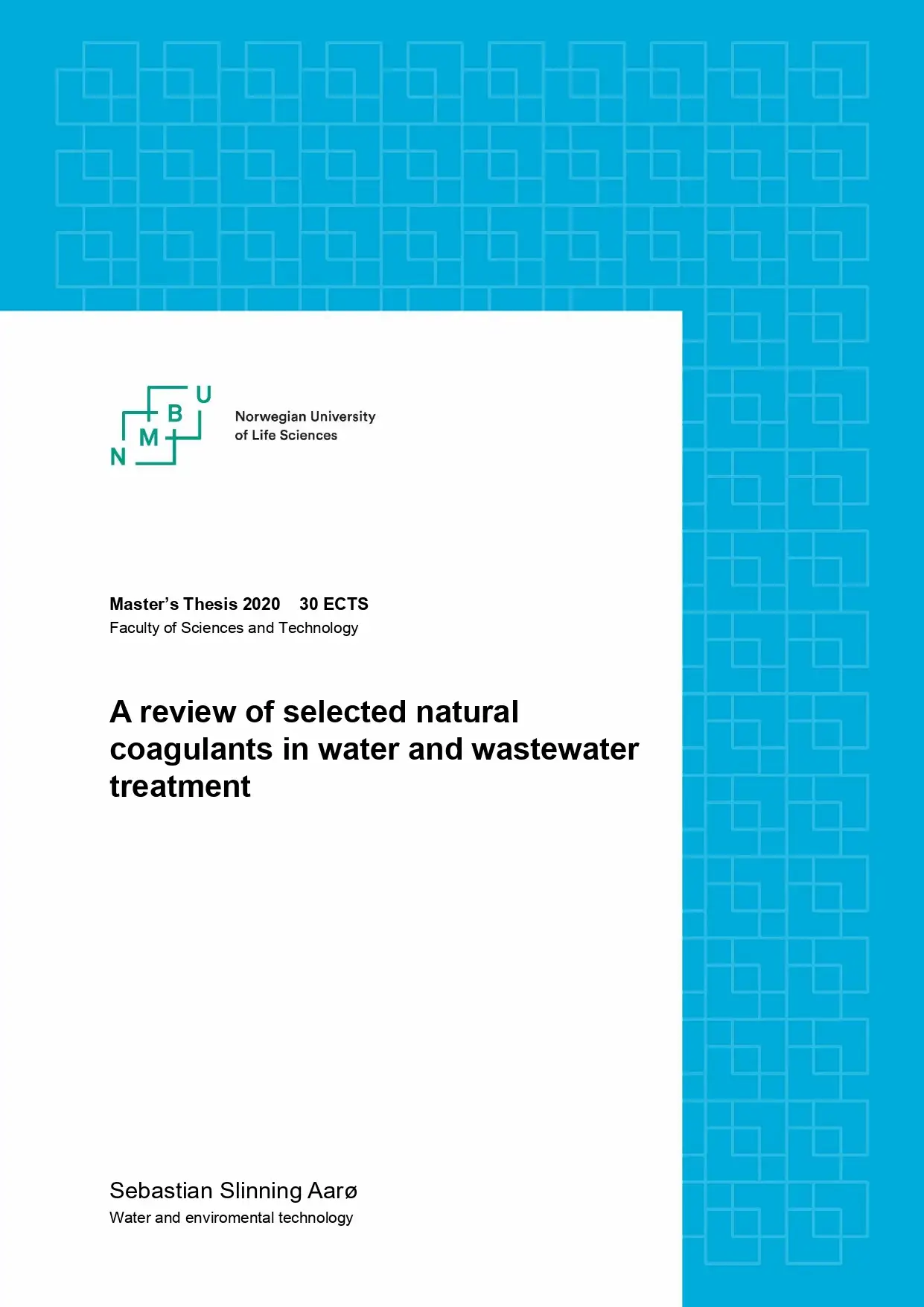
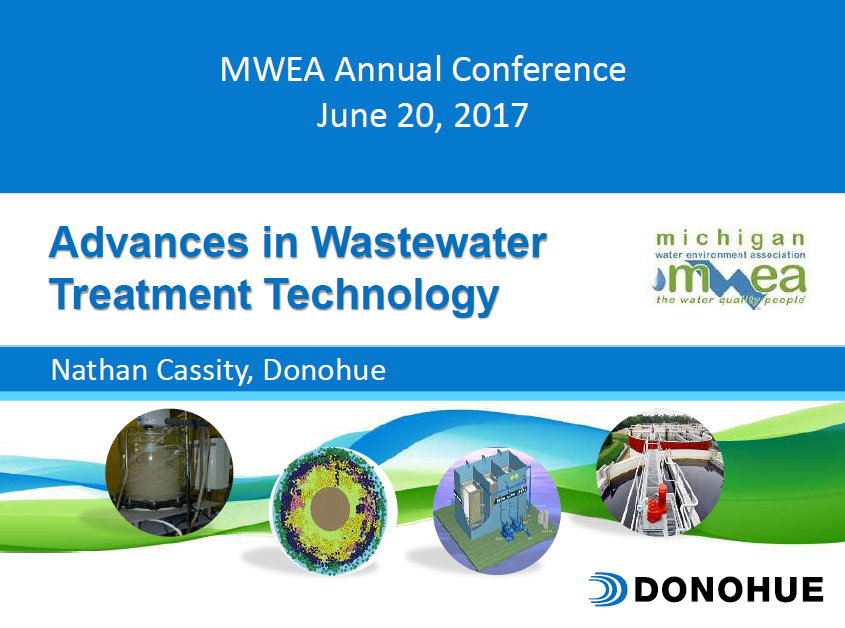
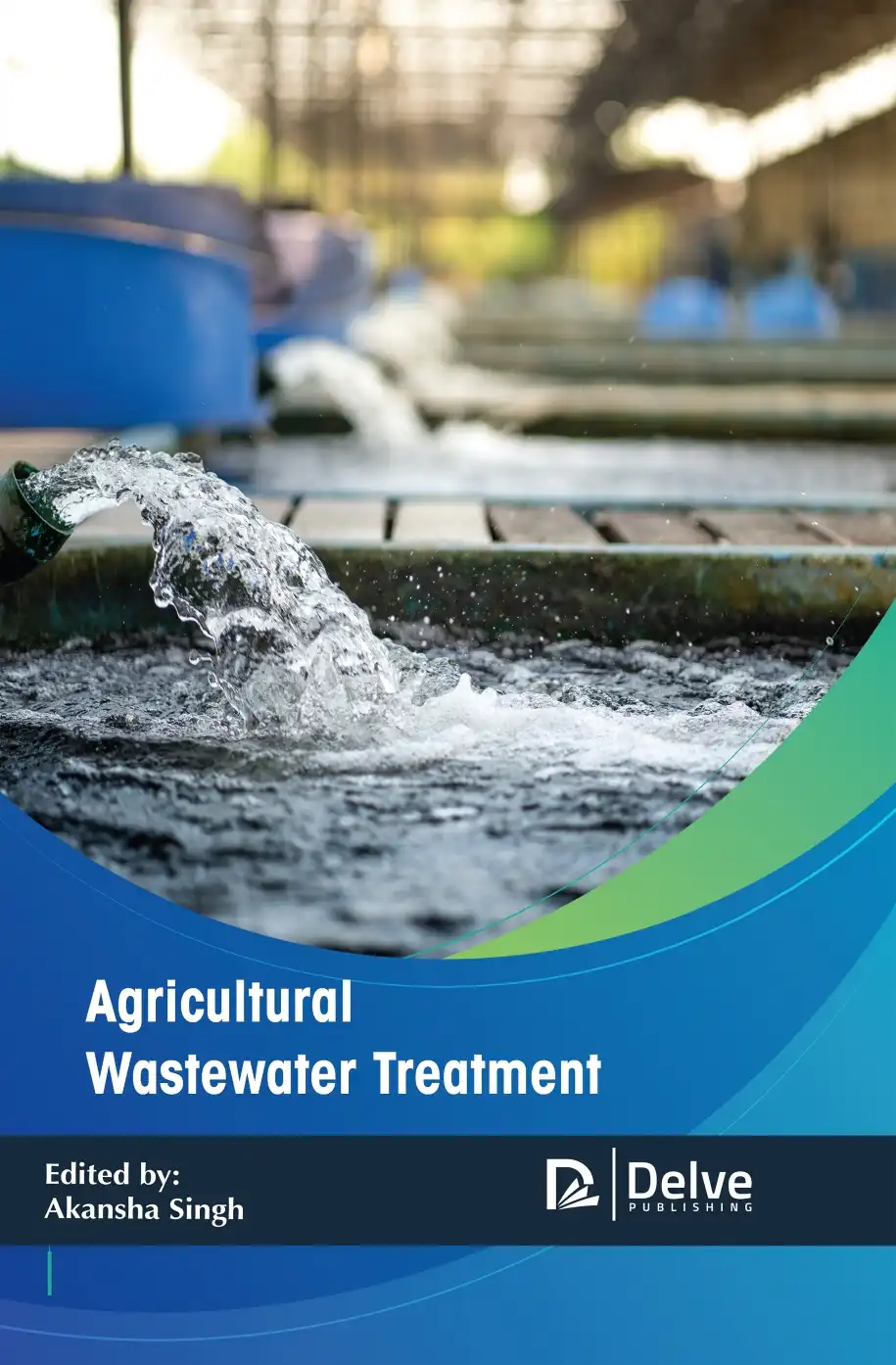
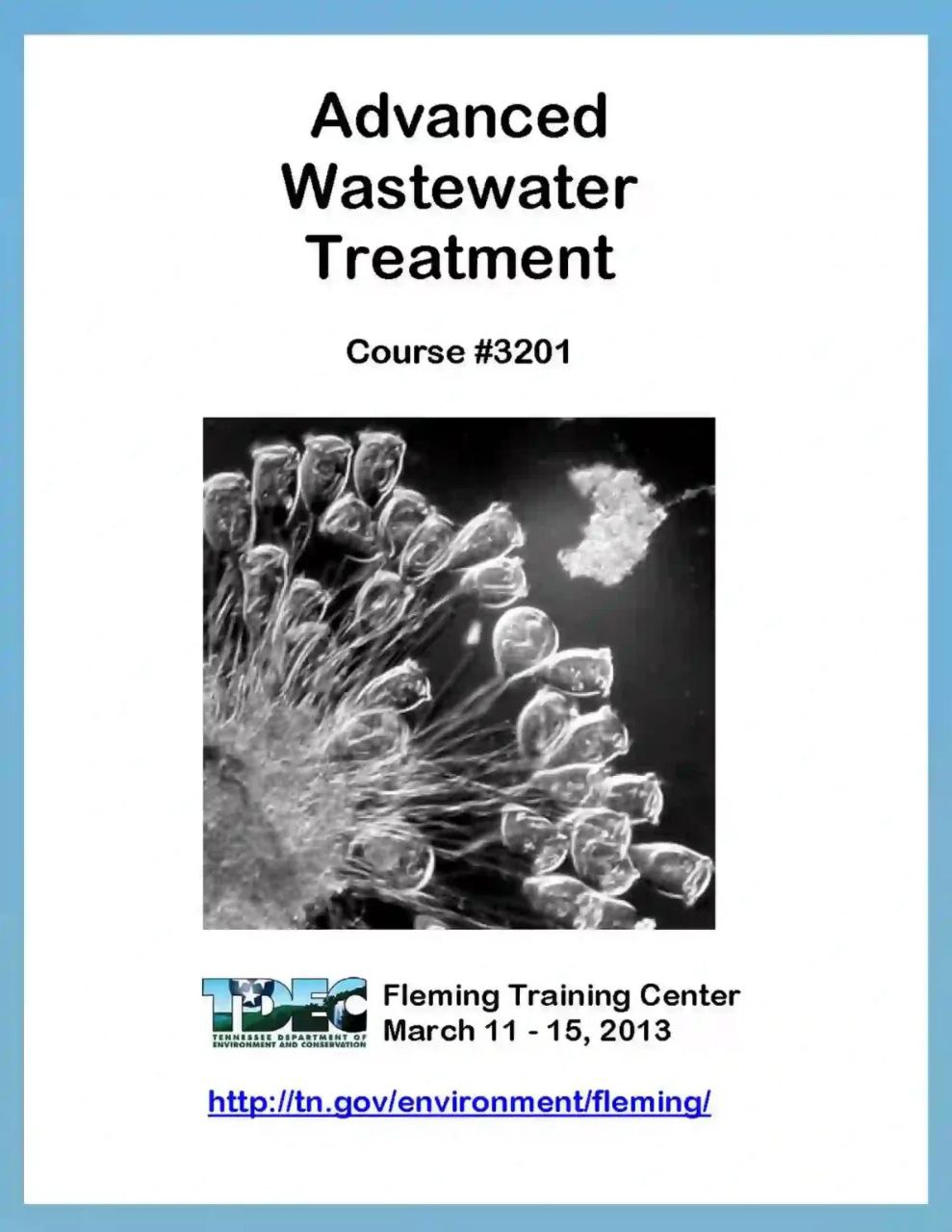
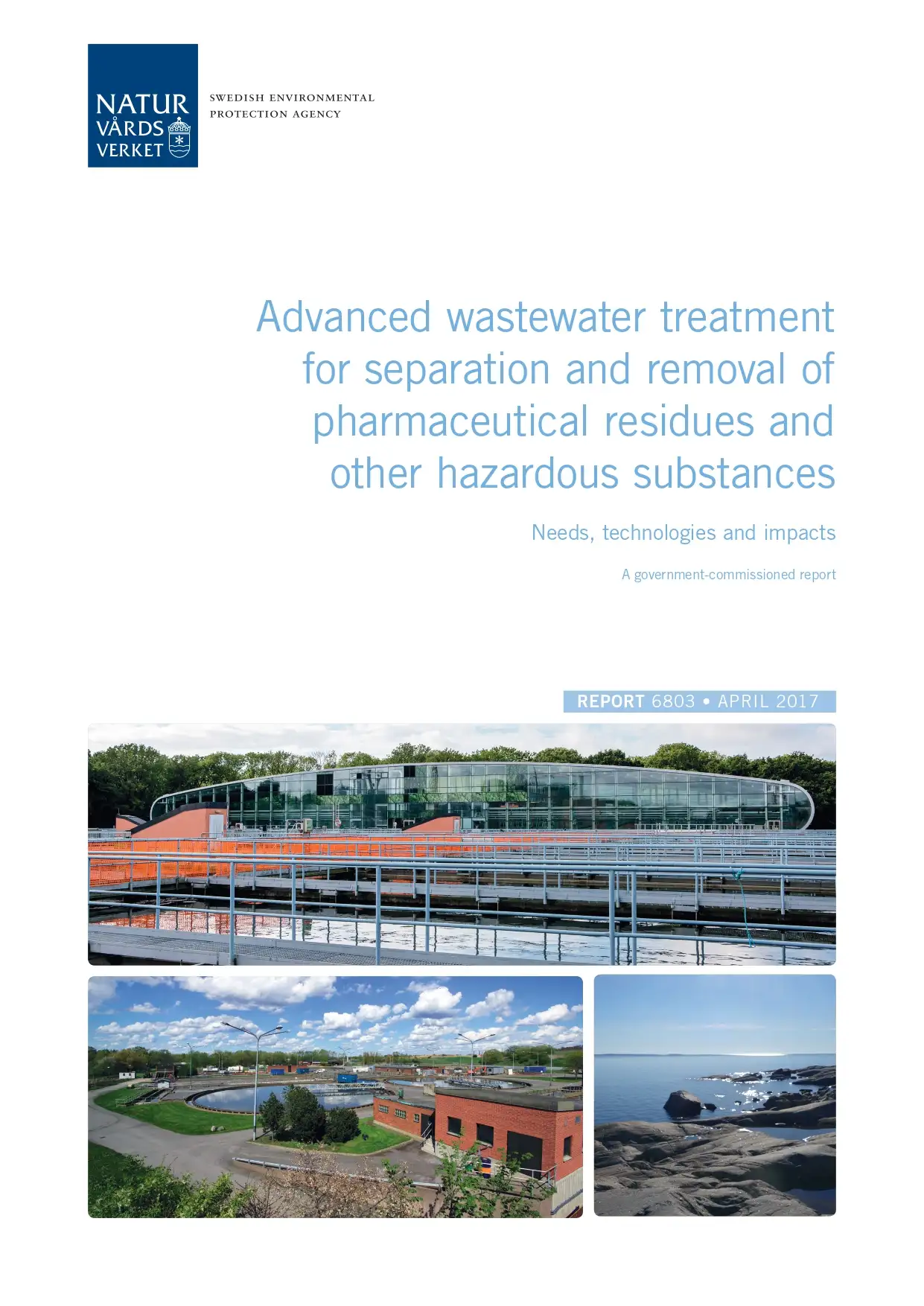
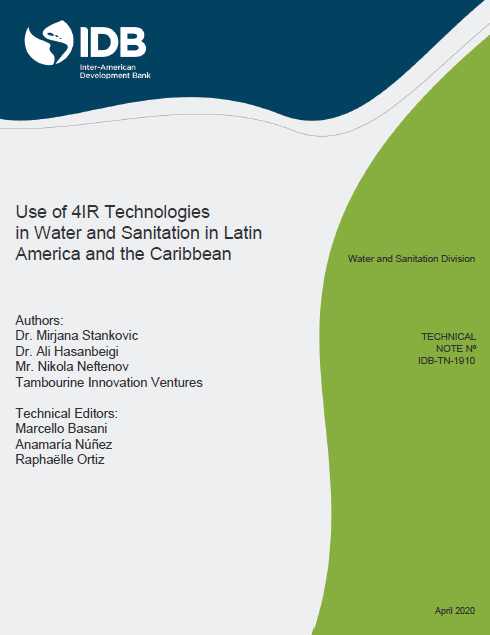
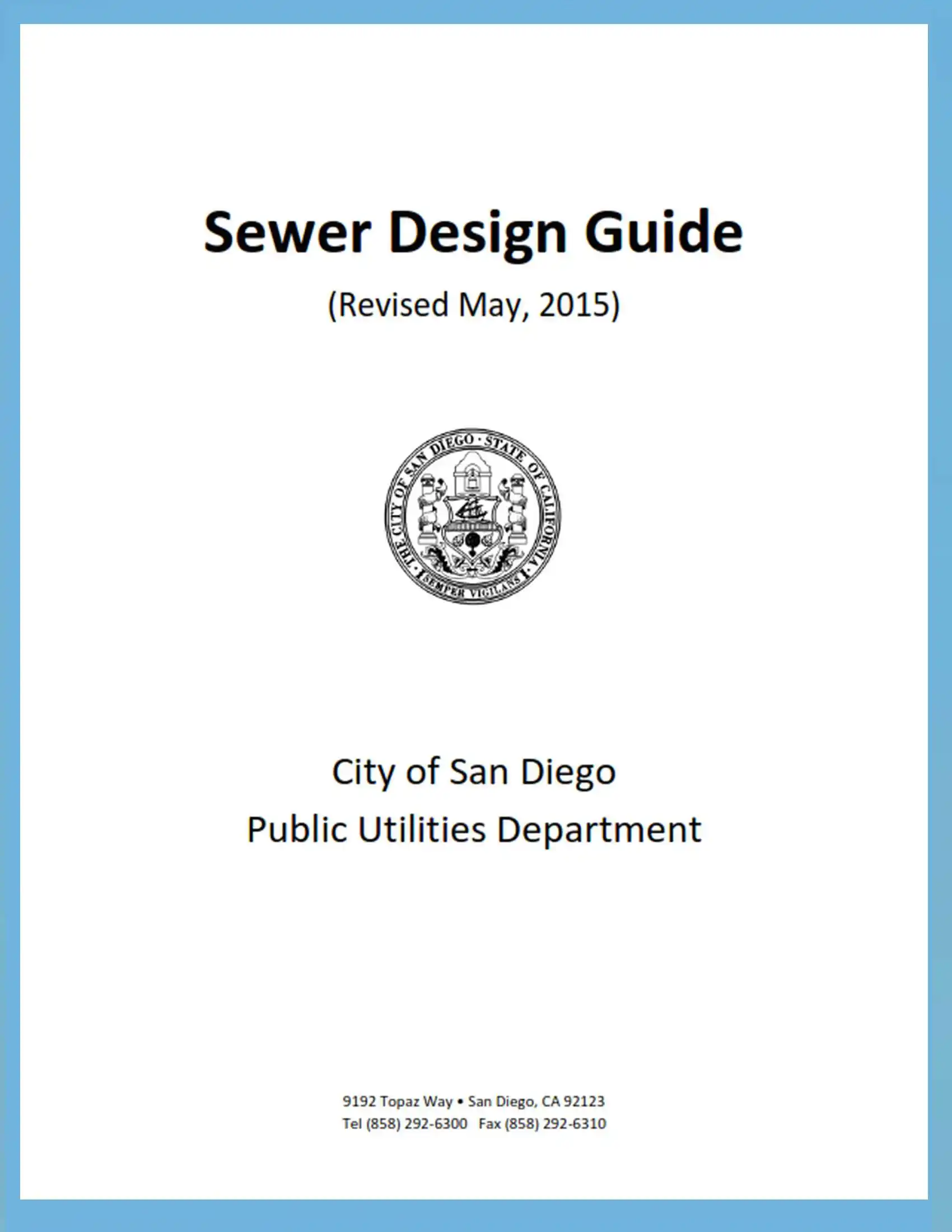
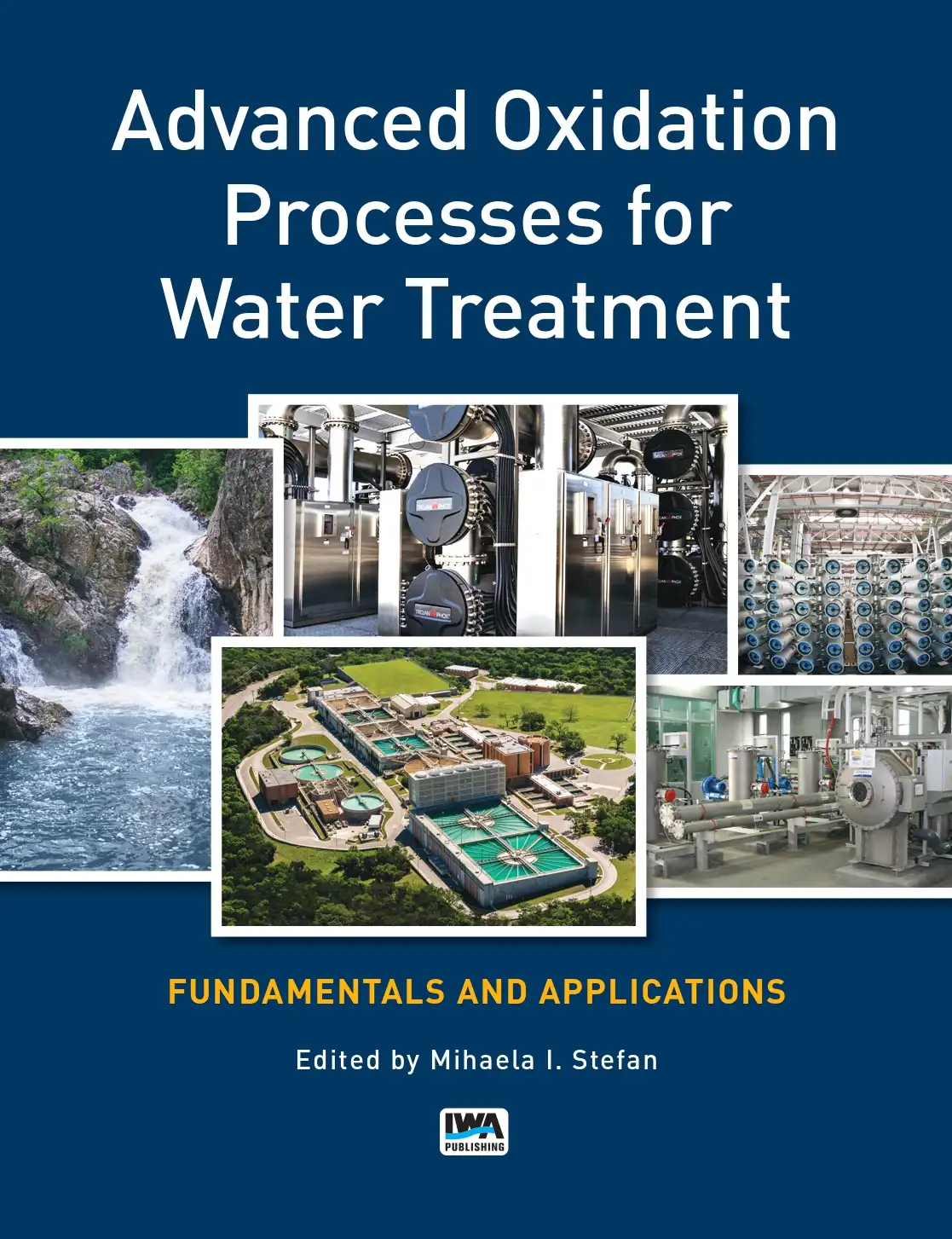
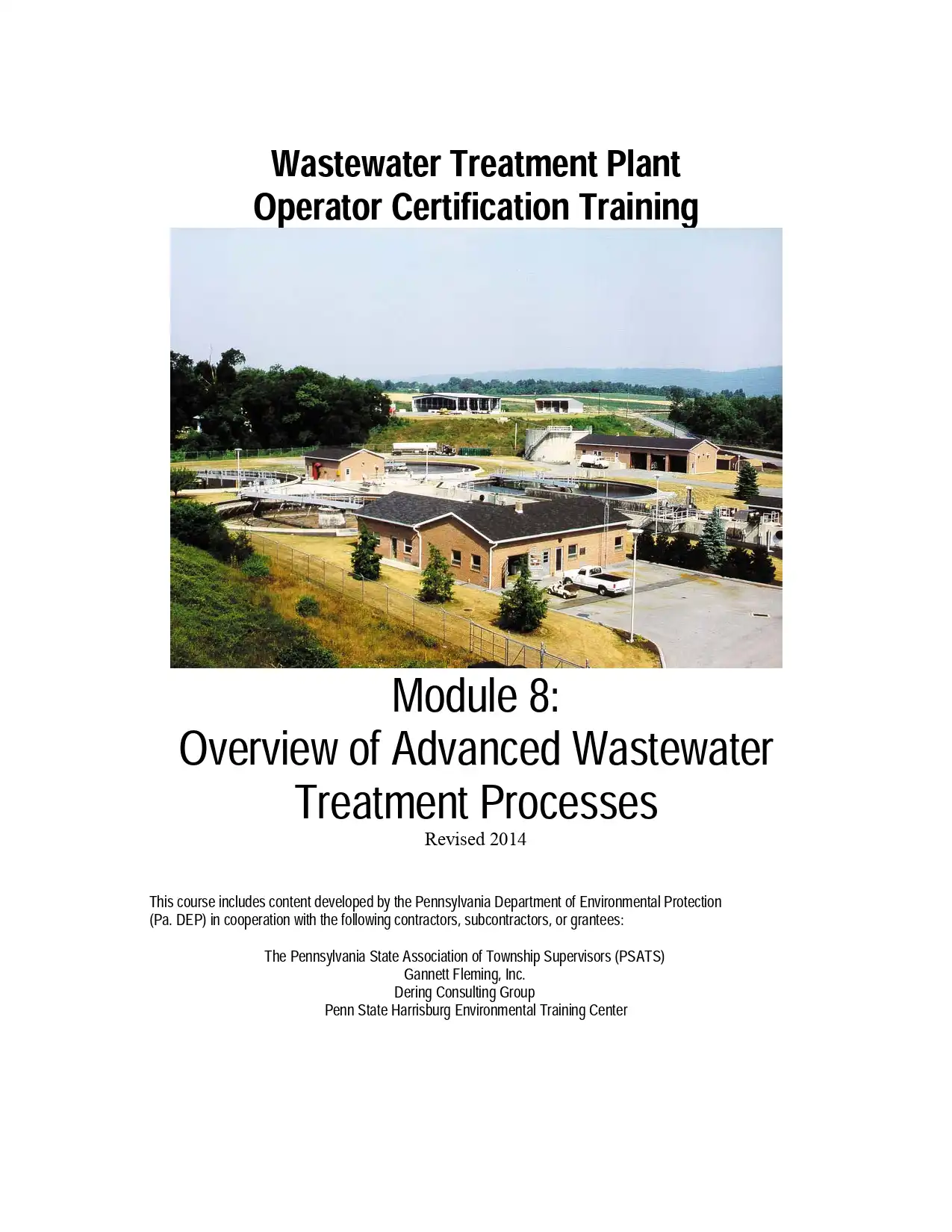
Reviews
There are no reviews yet.